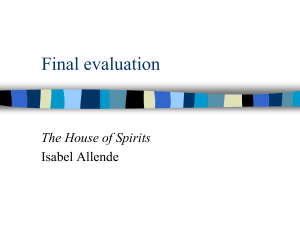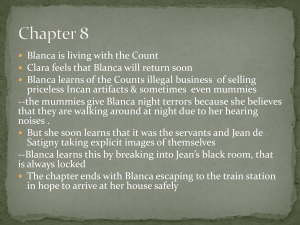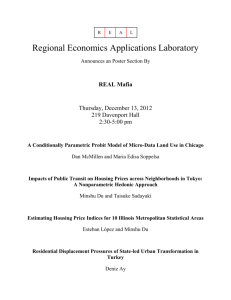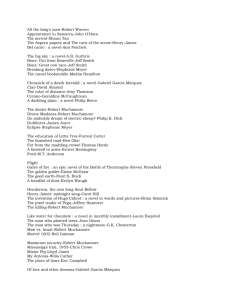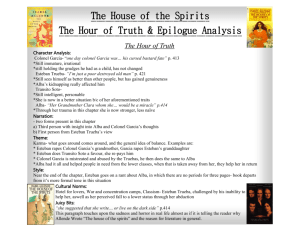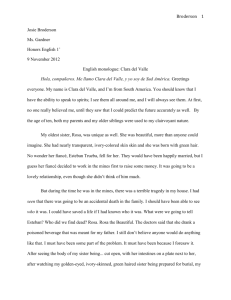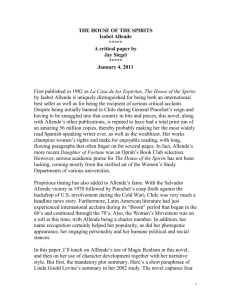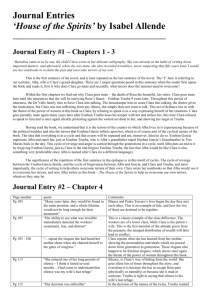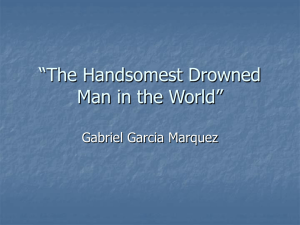La casa de los espíritus (1982)
advertisement
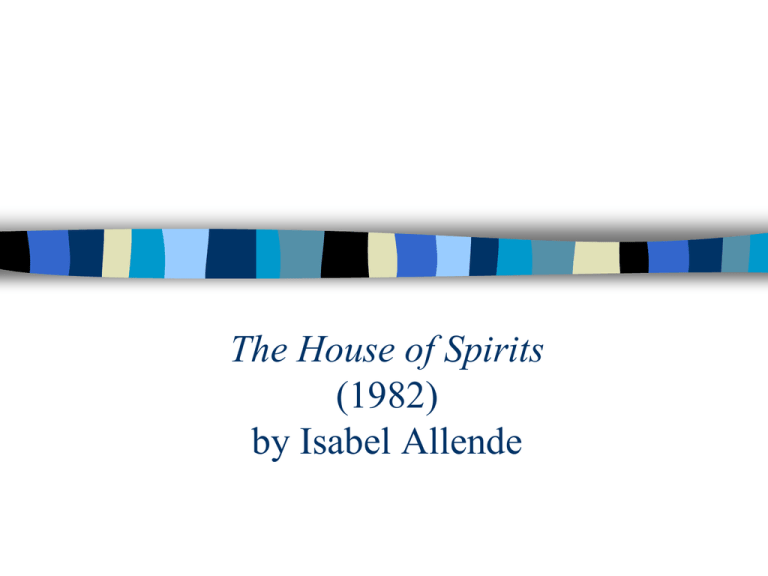
The House of Spirits (1982) by Isabel Allende Setting: a country in South American, very similar to Chile. Time: from the beginning of the 20th century to the first half of the 70’s. Type of plot: social realism. Main characters: Esteban Trueba: a conservative landowner and politician; owns the “Three Marías” hacienda. Clara del Valle Trueba: Esteban Trueba’s wife; she is able to predict the future and to communicate with spirits. Blanca Trueba de Satigny: Esteban and Clara’s daughter. Pedro Tercero García: one of the workers in “Three Marías”; felt-wing leader; Blanca’s lover and father of her daughter. Alba Trueba: Blanca and Pedro Tercero’s daughter. Esteban Trueba’s only legitimate granddaughter. Esteban García: Esteban Trueba’s illegitimate grandson; son of Esteban García, Esteban Trueba’s first bastard son. Narrators: The story is told by various narrative voices: 1. First person: Esteban Trueba and Alba. 2. Third person, omniscient narrator: Allende uses this type of narrative voice to achieve complexity in the form and content of the novel. The context of the novel On the first page, Alba says that she writes to “reclaim the past and overcome terrors of my own” (1). Like Alba, Isabel Allende began to write so that she could easily bear her pain. The military coup and Allende’s grandfather. The letter The House of Spirits Isabel Allende ≠ Alba. Both of them have faith in the power of the written word to fight against repression and to transcend time. Women in the novel Dedication: “To my mother, my grandmother, and all the other extraordinary women of this story”. Society: an inflexible patriarchal society, based on traditional values and suppressive power towards women, the poor, and the marginal. Most women in the novel challenge such society, which shows their strength and determination, as well as the power of justice (Clara, Blanca, and Alba). Women in the novel Nívea del Valle: mother of Clara and other 10 children. Although she is still wearing “underskirt,” she is a suffragist. Tránsito Soto: by starting a cooperative of female and male prostitutes, she becomes a union leader. She is cunning enough to maintain her “power” even during the dictatorship. Amanda: although she is physically weak due to the drugs, she would prefer dying by torture than betraying her brother Miguel. Women in the novel Other women in the concentration camp: even the soldiers get moved by their songs. In a patriarchal society, based on the image of the macho, men presuppose to have overall power of women’s sexuality: they rape her whenever they want; they force their wives to continuous maternity; they decide when and who their daughters are going to marry, and, if any of them refuse, they beat them. Social injustices The sexual assaults that female characters suffer also symbolize a broader example of social injustice. Esteban/ Pancha García: she represents all peasants and workers. Colonel García /Alba: she symbolizes all those people (men and women) that lose their identity, or even their lives, under the terror of a dictactor. The characters in depth: Clara symbolizes benevolence. Her magical qualities make her to stand out. Her name connotes clarity, open mindedness, and intuition. Her temporary escapes from this world show the irrational nature of reality, with its corruption and injustices. Esteban represents a whole social class that is loyal to the ideas of the past, with its strict hierarchical rules and prescribed behaviors. His character never changes; he never regrets his mistakes, which is the reason of his failure and the origin of his sadness. As opposed to Clara, he does not respect other people’s qualities, and he always follows society’s norms: he ignores his bastard sons, and the novel condemns him because of this. He loses his identity when he breaks the generational link that he should have preserved . The García family They represent a social class and a type of life: rural working-class and urban working-class. Their ancestors are a mixture of indigenous South American people and European immigrants. All of them have been oppressed for centuries. Pedro Segundo hates Esteban Trueba; he represents the older generation of men who served those who were socially above them, but that never tried to change the status quo. The García family Pedro Tercero García symbolizes the younger generation and sees things much differently. Pedro’s love relationship with Blanca means the breaking down of social barriers, which is Allende’s hope for her country. Alba incarnates the democratic perspective that has been denied to Chile and other Latin American countries.
